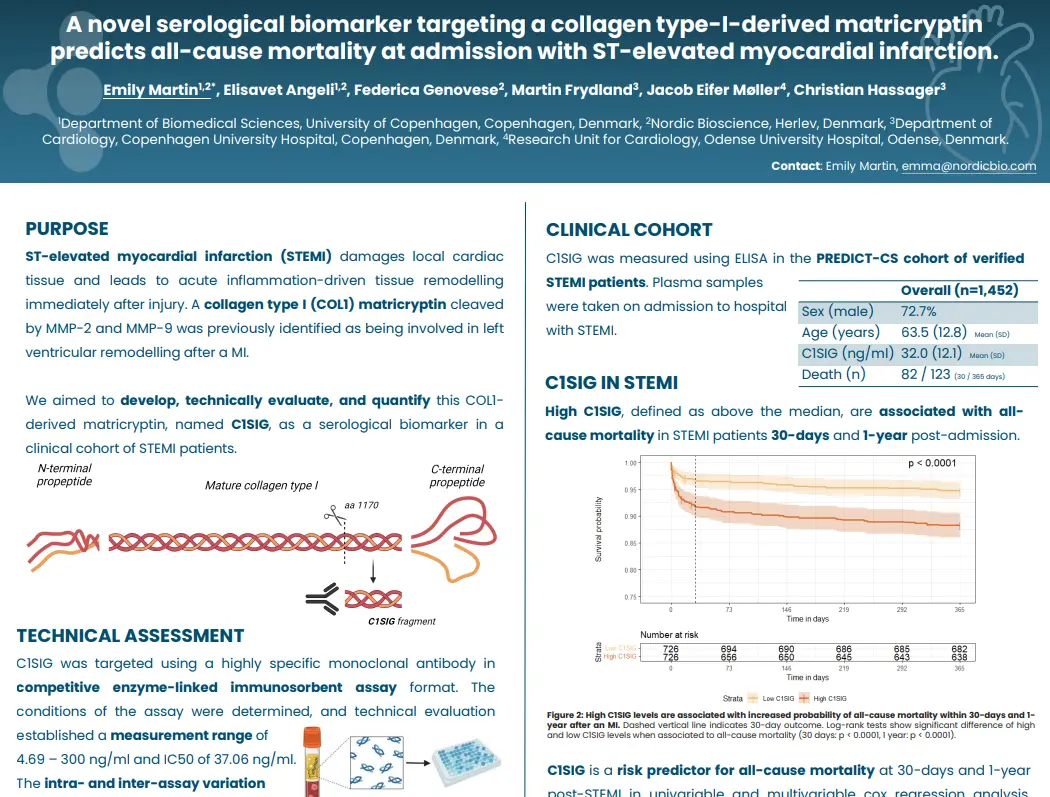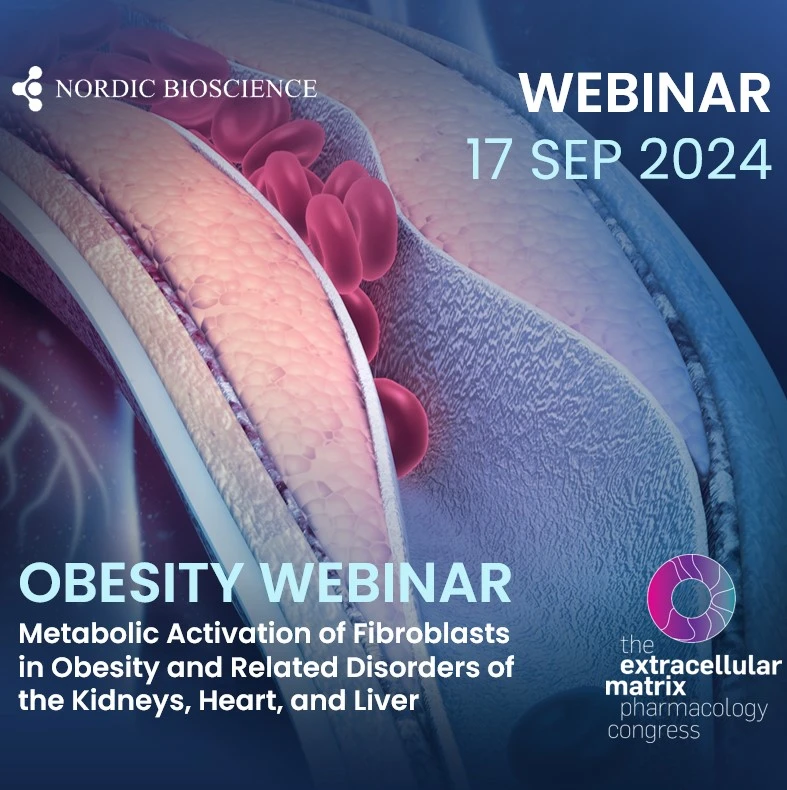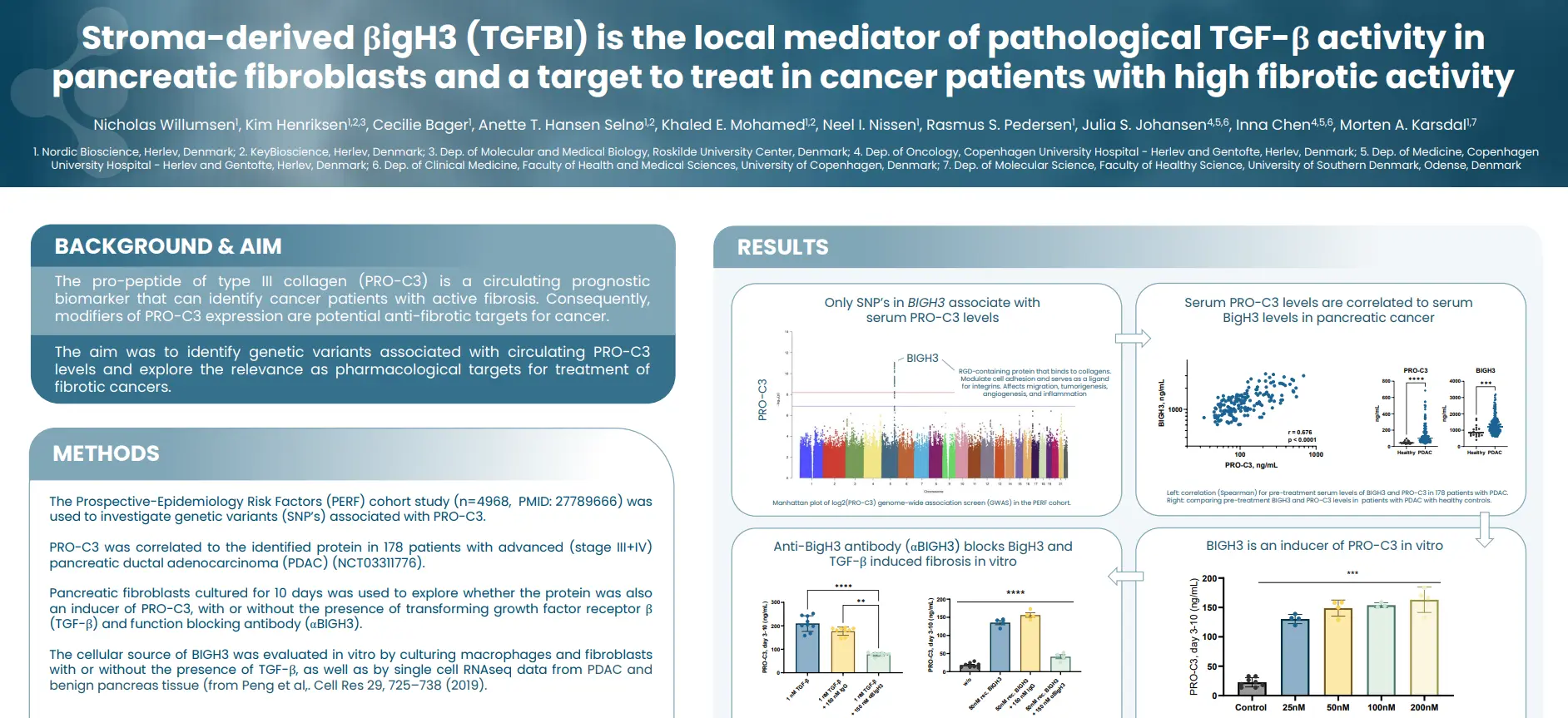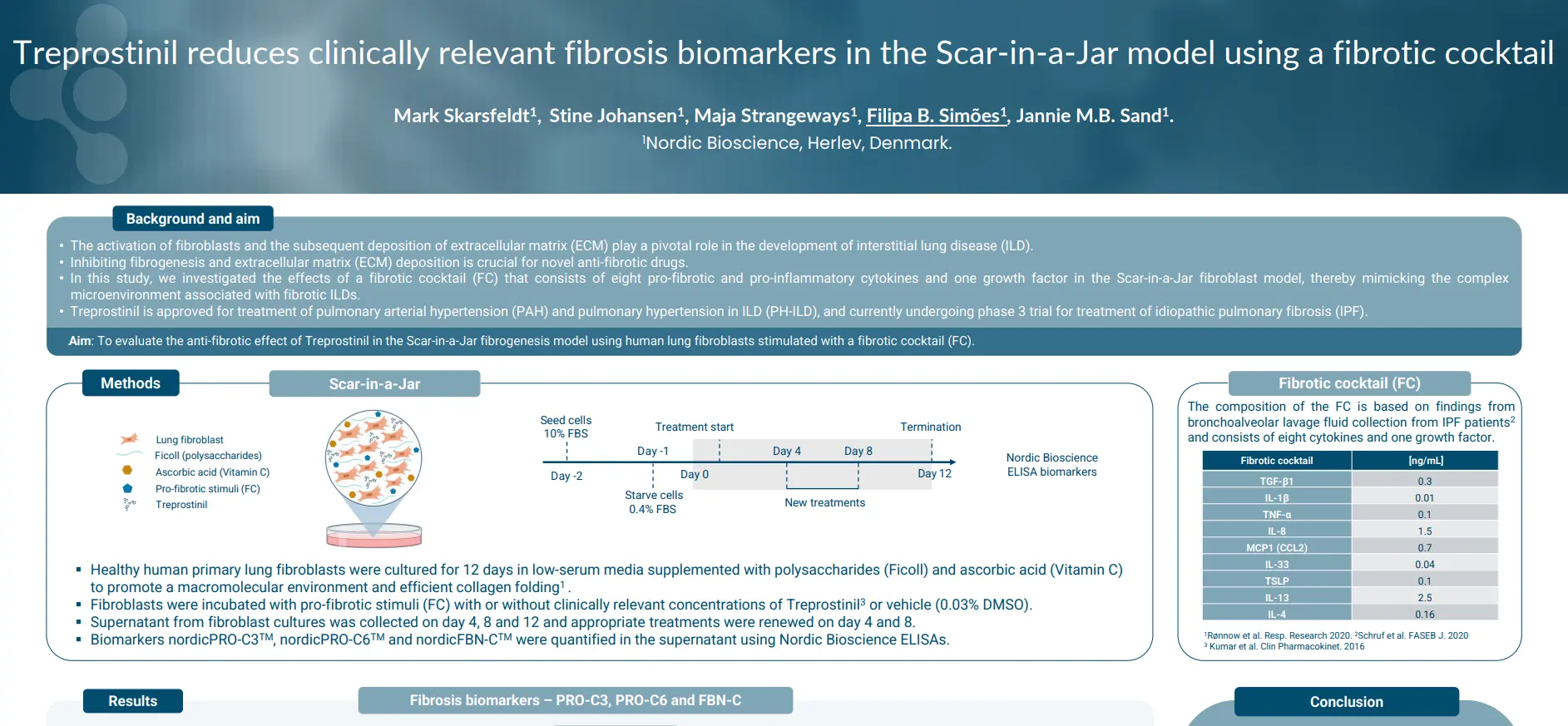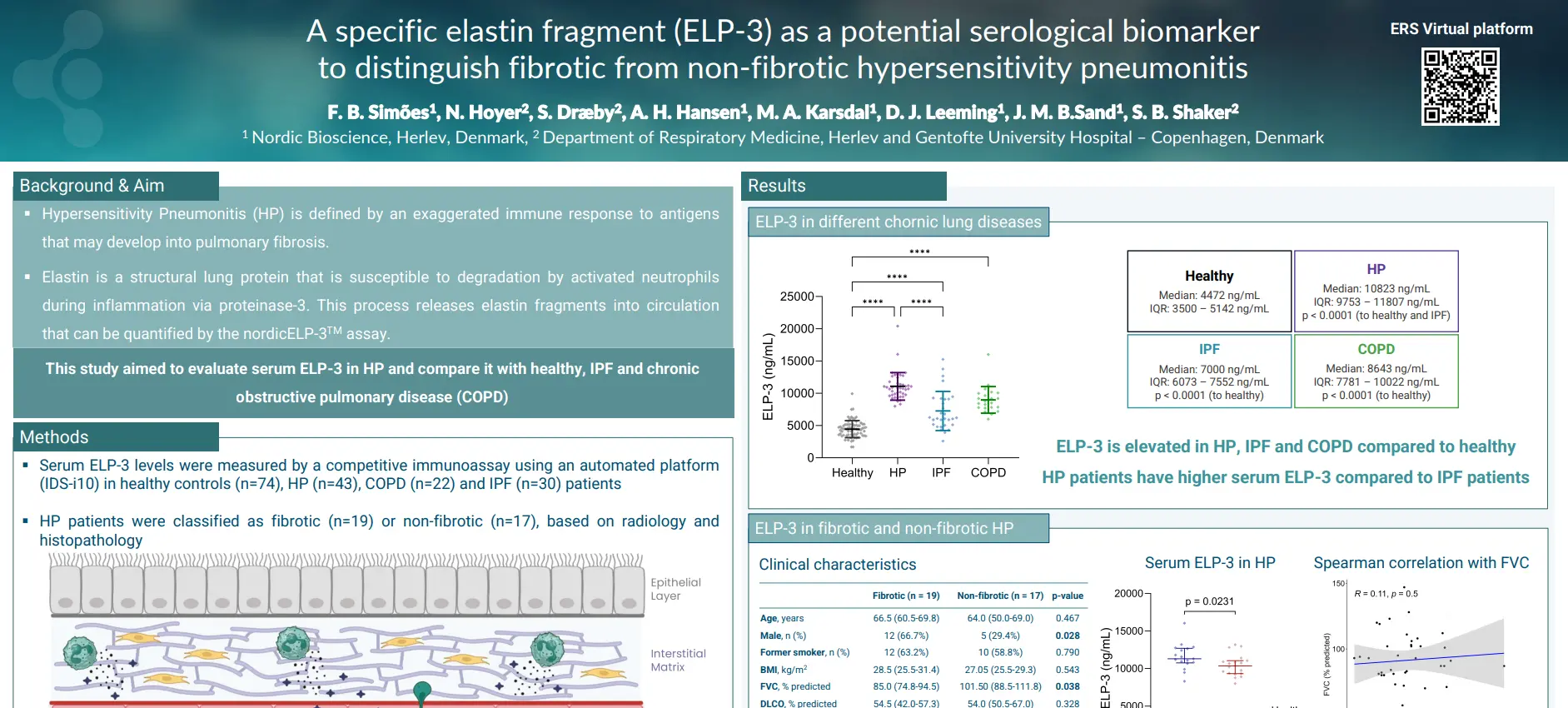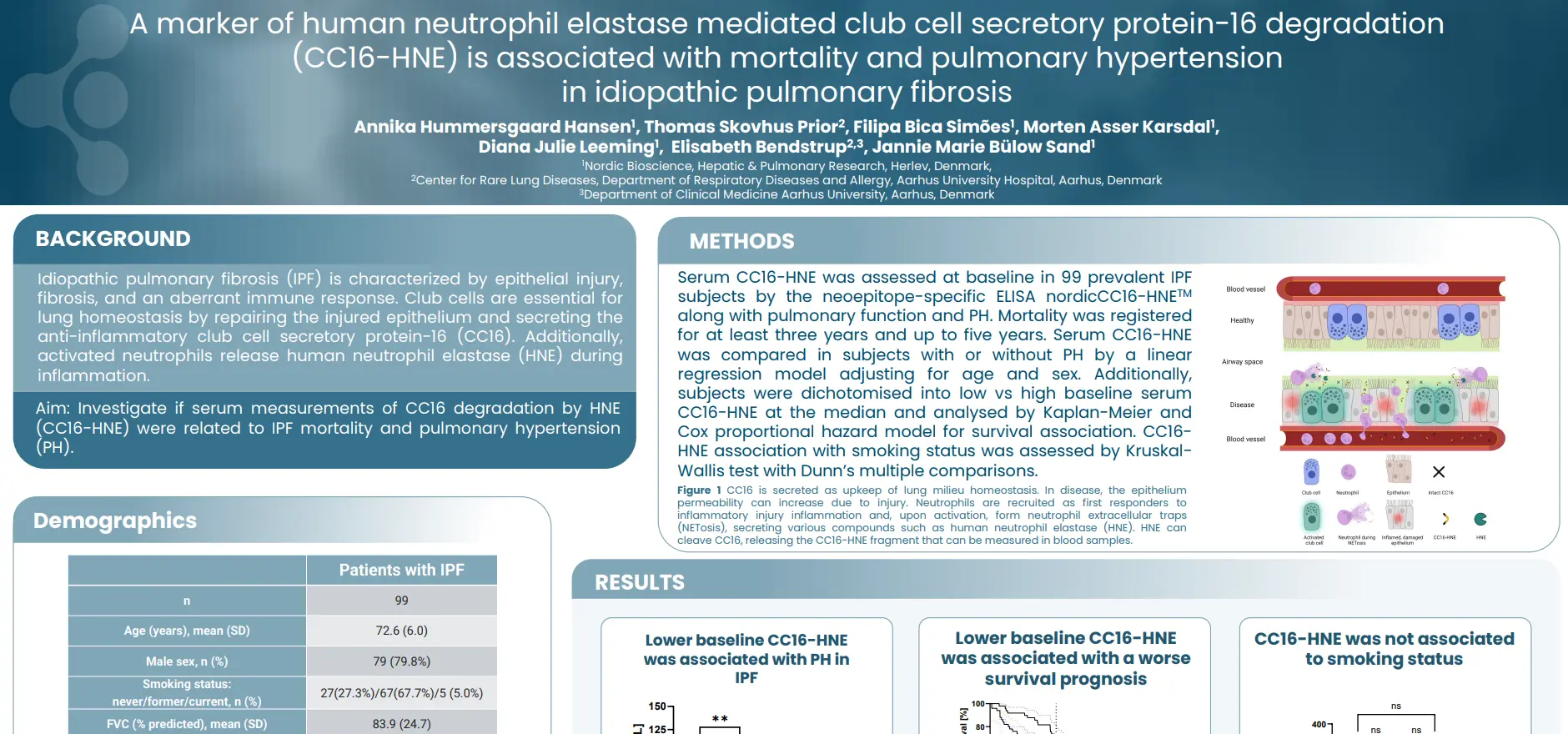A novel serological biomarker targeting a collagen type-I-derived matricryptin predicts all-cause mortality at admission with ST-elevated myocardial infarction
Introduction
ST-elevated myocardial infarction (STEMI) damages local cardiac tissue and leads to acute inflammation-driven tissue remodeling immediately after injury. A collagen type I (COL1) matricryptin cleaved by MMP-2 and MMP-9 was previously identified as being involved in left ventricular remodeling after a MI.
We aimed to develop, technically evaluate, and quantify this COL1- derived matricryptin, named C1SIG, as a serological biomarker in a clinical cohort of STEMI patients.
Poster
Conclusion
C1SIG was developed as a technically robust biomarker and demonstrated as an independent predictor of
mortality at 30 days and 1-year after STEMI, even when adjusted for multiple clinically-relevant variables.
This COL1 biomarker could be helpful in assessing acute extracellular matrix processing in individuals after suffering a STEMI and could identify a subset of patients at increased risk of long-term outcome.
